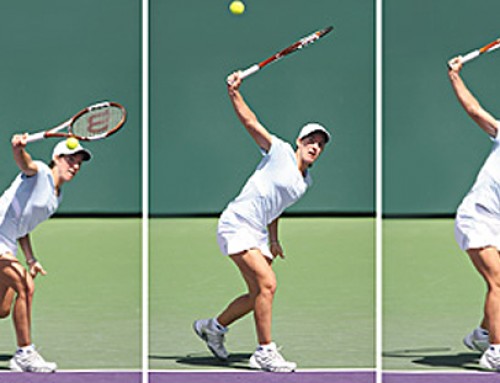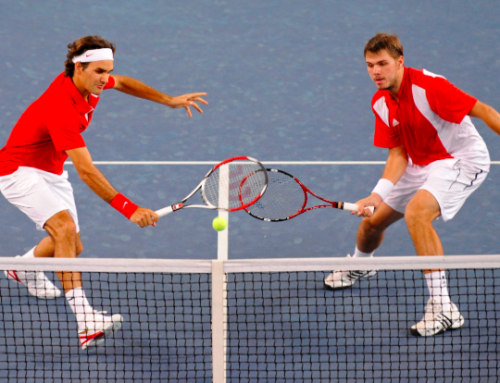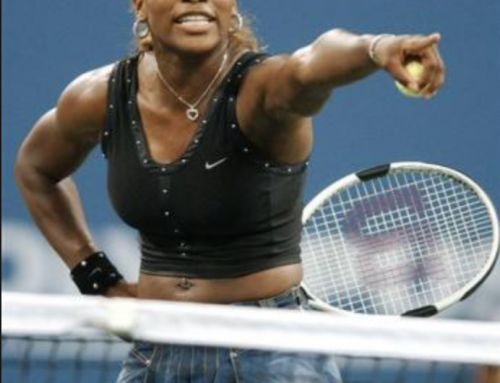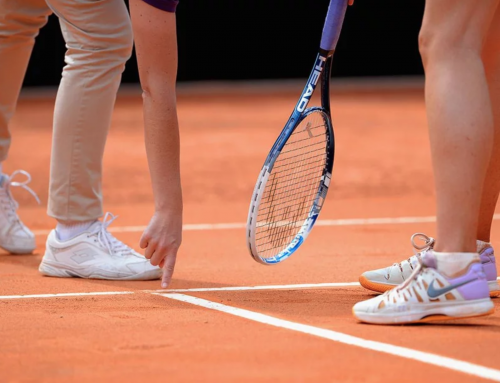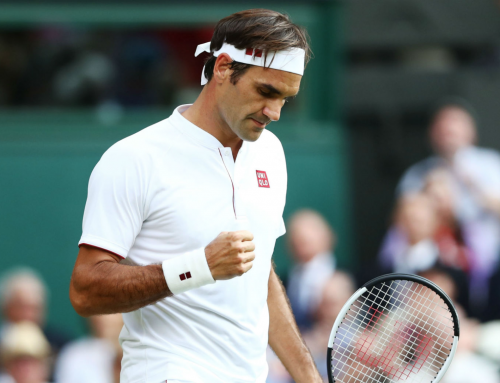There’s three things you need to make huge improvements to your game in a very short amount of time.
Today we’ll be diving into the third one that will help you cross the “raging river” of stroke improvement.
I’ll explain that analogy in a moment but first, if you haven’t read the first two parts in this series I highly recommend you do so now because they lay the foundation for what we’ll be talking about.
You can either scroll down a bit in your inbox or read the full messages here:
Alright, lets get down to business.
——————————-
Principle 3: Process
——————————-
If you execute what you learned in the first two parts of this series then you’ll quickly have a long list of very worth while technical elements to work on…
…and they’ll be wisely prioritized from most to least important so you know what order to tackle them in one at a time.
Great start, but now the burning question is “HOW do I make those changes??”
In a perfect world we’d be able to simply choose to stop hitting our serve with a waiter tray take back and it would magically disappear forever, replaced by the correct movement.
Unfortunately real life doesn’t work that way!
Changing technical habits is HARD.
Especially when you’ve spent years and years grooving poor mechanics.
It’s like attempting to cross a wide, raging river:

You’re standing on one side with your old forehand, and way on the other bank is the new swing that you’d love to make your own.
Our “muscle memory” is like a strong current, ready to sweep away any new movements you’re trying to incorporate the second you stop consciously focusing on them.
Unfortunately most players and coaches jump right into the water and start madly fighting the rushing water…
They do that by taking their new awareness and knowledge about how they’re supposed to swing and trying to immediately incorporate it into a full speed rally.
Once in a while they might get close to doing the “new swing” correctly, but the more they’re challenged or rushed the more things go right back to how they’ve always been.
Their mind is working overtime to not only read the ball, use good footwork, position themselves correctly, and time their swing but also make some kind of big, fundamental change to how they usually hit the ball.
Only an elite athlete with extremely high levels of kinesthetic awareness has any chance of making a change in that environment.
99% of players will eventually they get tired and give in to the force of the rushing water, reverting right back to the comfort of their familiar swing.
Maybe they’ll fight a good fight for 10 minutes, or even a few hours while they struggle to keep up with their drill group or match play, but before long they’re back to using what “worked” for them before.
The result: ZERO improvement!
What’s the solution?
Placing thoughtful, purposeful stepping stones at exactly the right distance all the way across the river.
Within the context of tennis improvement those stepping stones are called progressions.
Drills, exercises, and other different layers and levels of execution that slowly but steadily increase in difficulty from the most easy possible (the first stepping stone) all the way to full speed (the other side of the raging river).
Here’s the bottom line if you’re a player: gathering knowledge about how you currently swing and deciding how you’d like to swing instead is NOT good enough to actually improve.
You need an effective process to follow otherwise you’ll constantly revert back to your old habits!
If you’re reading these words then I know you’ve already experienced this.
I know because I experience it every single time I hit.
My level of knowledge about how I SHOULD swing is light years ahead of what my actual HABITS are.
The only way to close that gap would be with a very focused, very purposeful process of rewriting over my current swing patterns with new ones.
And currently I don’t have time to devote to that…..family and business both come first 🙂
What about you?
Are you ready to commit to these principles so you can transform your game and reach the next level of play?
I’ll be wrapping this special series up with something that we’ve never done before.
Talk to you then.
Yours Truly,
-Ian



